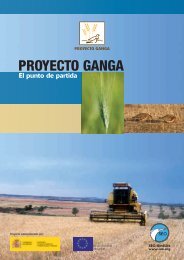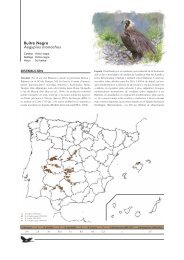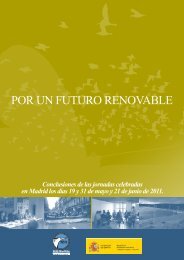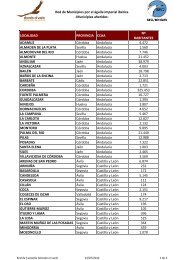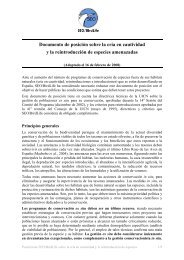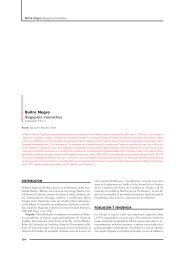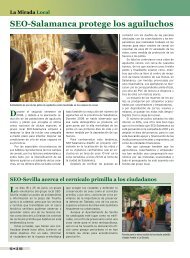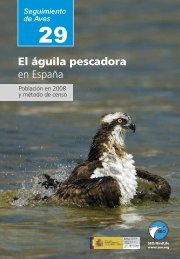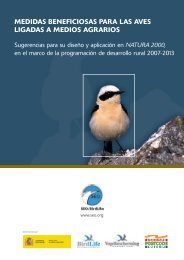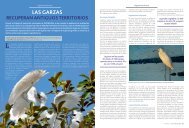Ãlvarez, D., Velando, A.. 2007. El cormorán moñudo ... - SEO/BirdLife
Ãlvarez, D., Velando, A.. 2007. El cormorán moñudo ... - SEO/BirdLife
Ãlvarez, D., Velando, A.. 2007. El cormorán moñudo ... - SEO/BirdLife
- No tags were found...
Create successful ePaper yourself
Turn your PDF publications into a flip-book with our unique Google optimized e-Paper software.
SummarySUMMARYThis monograph presents the results of the first (2006-2007) national census ofEuropean Shag (Phalacrocorax aristotelis) in Spain. Before this census, the informationavailable on the populations of this species consisted of only some regionalcensuses that had been made at irregular intervals.The Iberian population of European Shag is the most southerly within the wholerange for the species of european population, and totals almost 6% of its worldpopulation. Two shag subspecies breed in Spain: P. a. aristotelis, in the Atlanticcoast, and P. a. desmarestii, in the Mediterranean coast. During the breeding seasonsof 2006 and 2007, all areas for which current or historic breeding recordsexisted were visited, as well as those locations showing suitable breeding conditions.Thecensus tried to include three visits to each of the colonies, with the aimof recording as many breeding pairs as possible; the species is highly asynchronousand one single visit usually leads to underestimating the actual population.Only secure breeding (i.e. nests, eggs or chicks) was included in the census andin the subsequent trend analyses. Likely breeding was also recorded, although itwas not incorporated into the analyses.According to the outcome of the first national census, the secure breeding populationof European Shag in Spain amounts to 3,764 pairs, and 60 additional pairsof likely breeders. The population of the Mediterranean subspecies contributesto the overall figure with 2,087 pairs, whilst the remaining 1,667 do correspondto the Atlantic subspecies. Two single regions within Spain comprise 87% of thepopulation: Galicia (34% of the total; 76% of the aristotelis subspecies) and theBalearic Islands (53% of the total; 96.6% of the desmarestii subspecies). Likewise,the most important fraction of the population of the nominal subspecies concentratesin the Cíes-Ons Archipelago, where colonies hosting over 300 pairscan be found; meanwhile, most of the Cantabrian colonies range between 5 and20 pairs. Breeding populations of European Shag are very scarce along theMediterranean coast of the Iberian Peninsula, with only a few pairs being foundin the coasts of Catalonia and the region of Valencia.As suggested by the census results, the desmarestii subspecies seems to be in abetter state than the nominal subspecies, with the Balearic populations of theformer, and in particular the ones of Mallorca, being amongst the healthiestthroughout the Mediterranean. On the contrary, the population of the aristotelissubspecies has experienced a decline beyond 50% throughout the last three71



